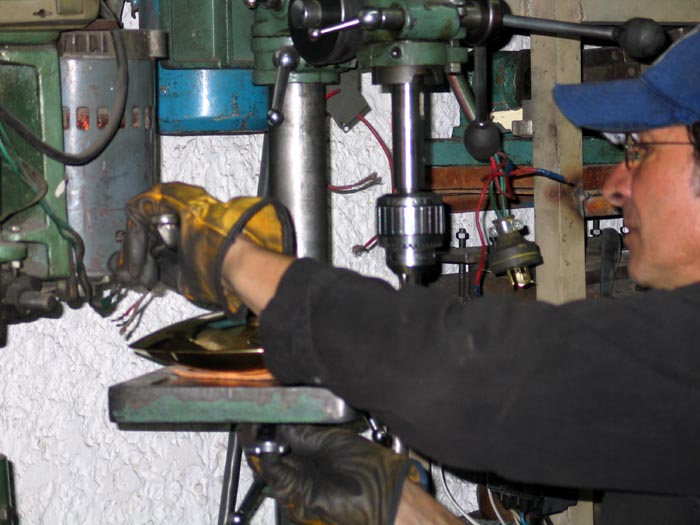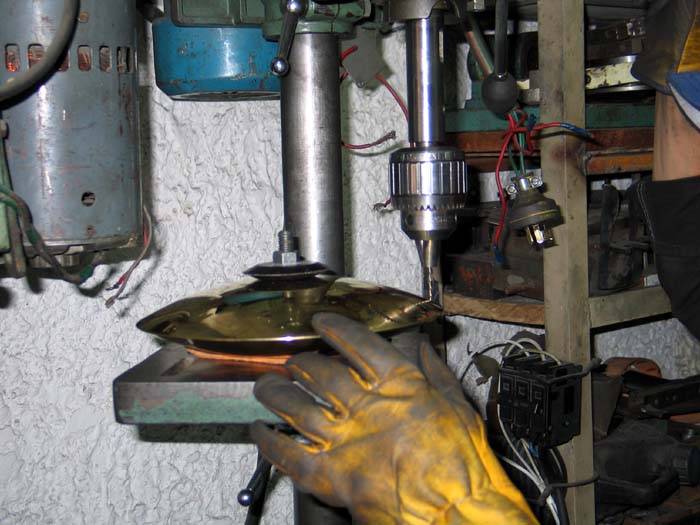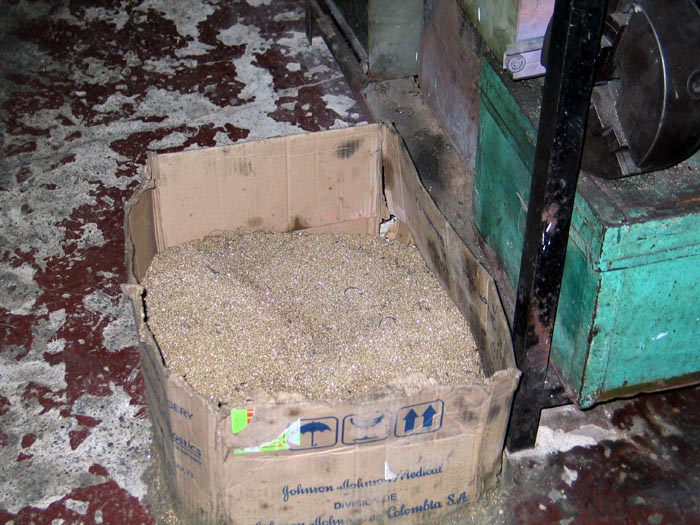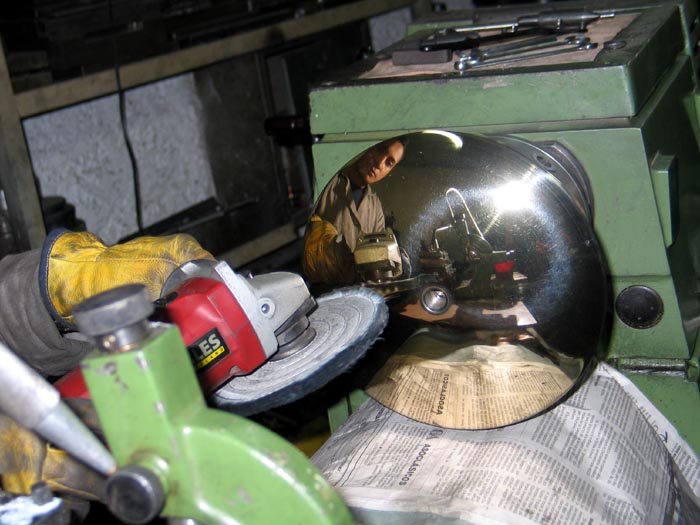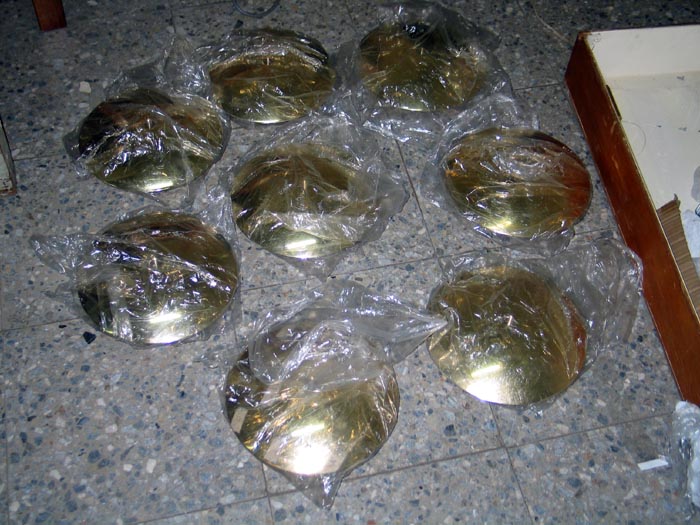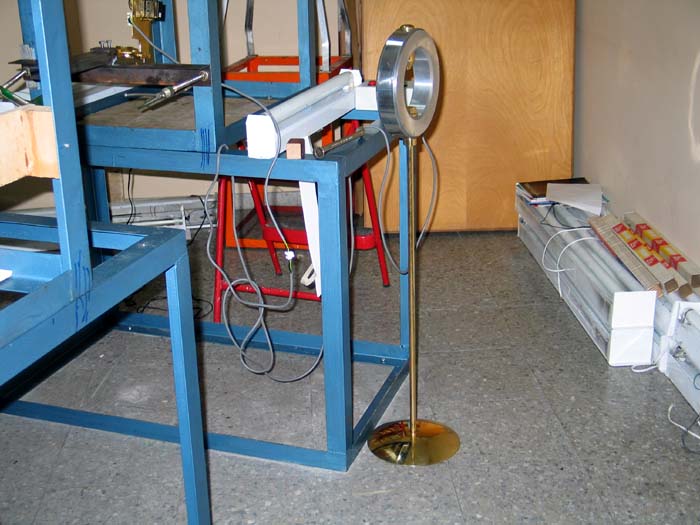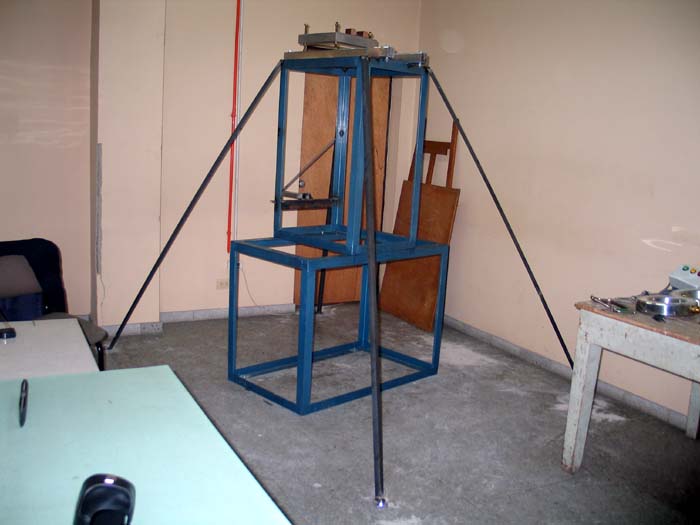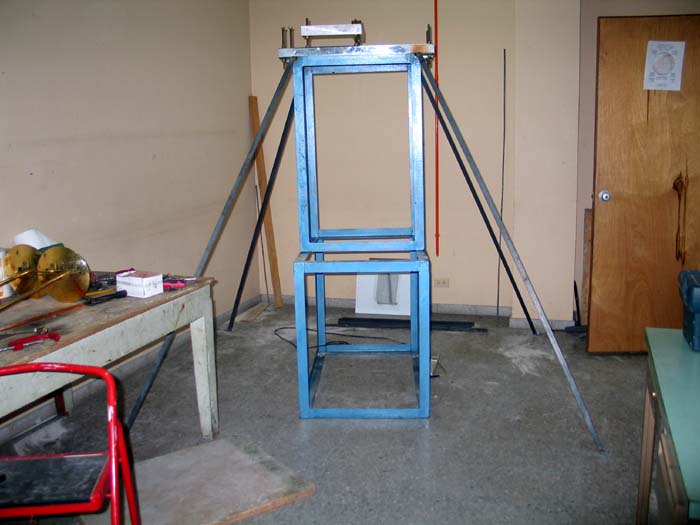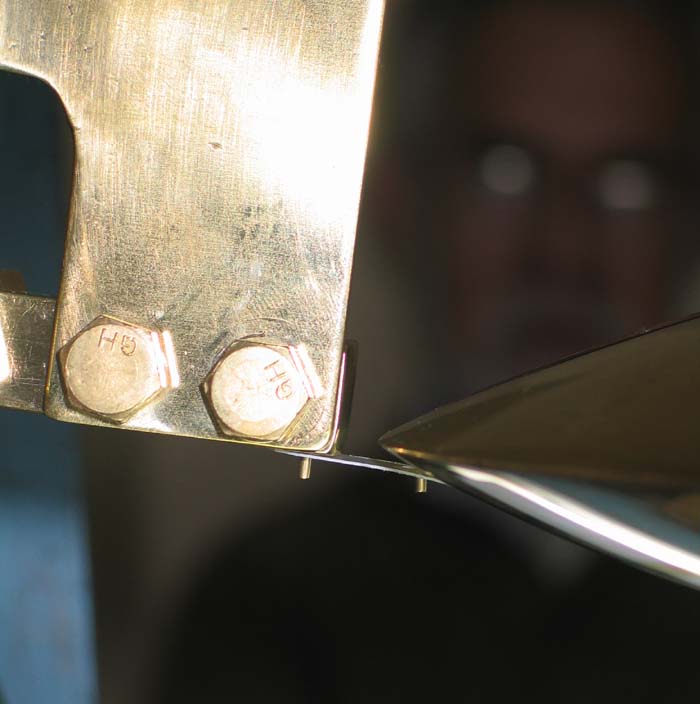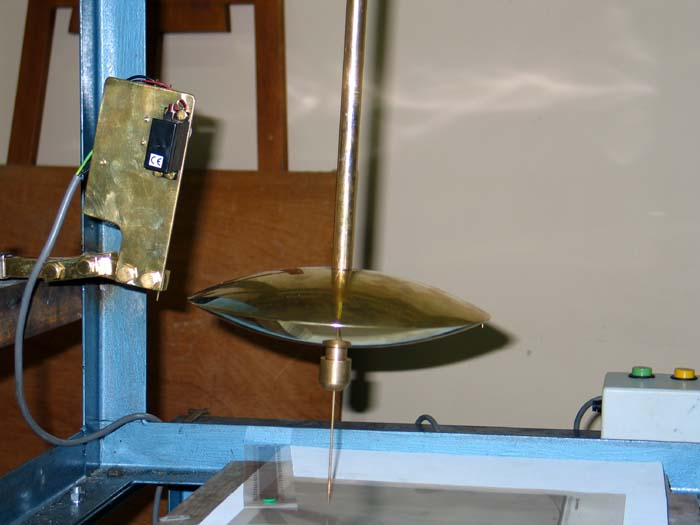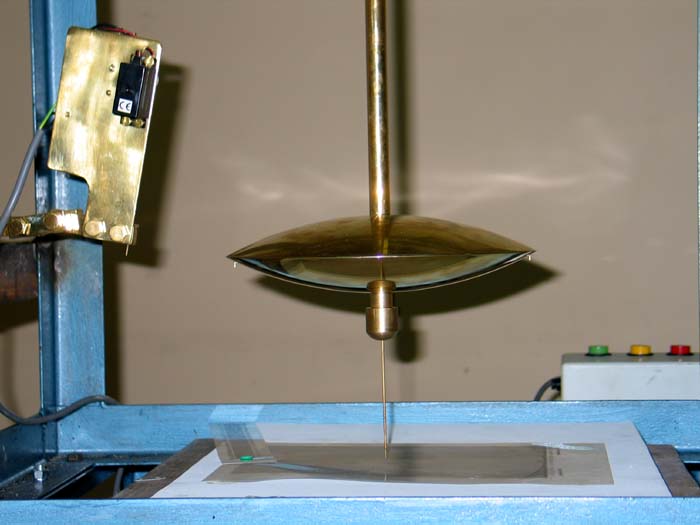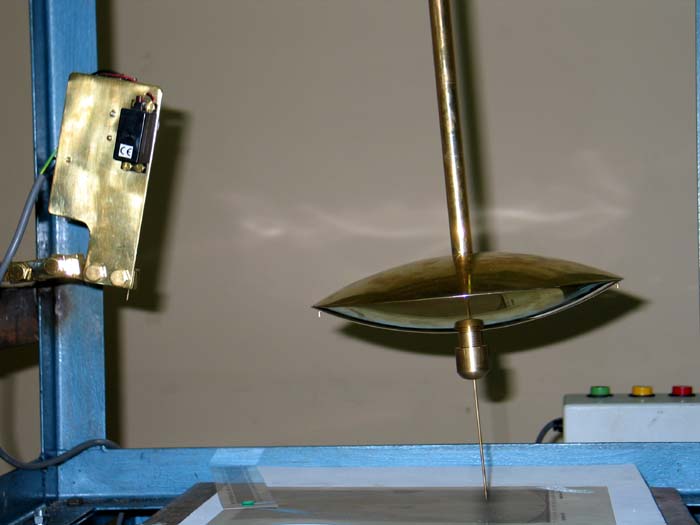The astute reader will have noticed that, in all the descriptions of making our setup in Penonome, we have not shown any bobs for the pendulums. This was because we didn't have any. From the beginning, our plan has been to have twelve of these lenticular Olenici-type bobs manufactured in Colombia under the supervision of Prof. Hector Munera. We were quoted a price in Colombia which was about 1/4 of the price in Europe.
We arrived in Colombia on Monday 14th, and the bobs were virtually finished. Here's one of them: The only operation remaining to be done was to drill two holes near the rims of the bobs,extending along its axial direction (i.e. not perpendicular to the curved surface), for inserting pins for the release. These shots show the machine shop operative drilling these holes - it's a tricky job: The bobs were originally cast by a subcontracting foundry, as preforms. This box holds the brass swarf produced by trimming them down in the lathe: This lad is performing the final polishing operation: Here are eight of the twelve bobs, all ready to go: This shows one of the two pendulums for installation in Bogota, set up and ready to hang: Some students are asking Prof. Munera about the project: The support structure for Bogota pendulum "Theodora", which is set up to swing in azimuth 135o, i.e. in the NW-SE direction. We intend to weld a lot of cross members along the various diagonals, in order to stiffen up the structure. This work will be performed next week. Here is a closer view of the framework in its current state: The support structure for the other Bogota pendulum "Cleopatra", which is set up to swing in azimuth 45o, i.e. in the NE-SW direction: A closer view: Actually this type of floor-mounted frame is not at all an ideal method for mounting a paraconical pendulum; we know this. There inevitably will be a certain degree of wobbling of the frame, which leads to cross-excitation between the two perpendicular modes of the pendulum (along and perpendicular to the initial release), which correspond to coupled harmonic oscillators. In fact, we did observe this phenomenon in our initial runs. Probably the ideal is the type of through-floor construction adopted in Penonome, because more than a ton of anchoring mass is provided right at the level of the flat; but this system involves a lot of disruption to the building, which was not practicable in our Bogota situation. Perhaps the final solution will be a tripod of ultimate stiffness, anchored directly to a large concrete block resting on, or embedded in, the floor. In any case, whatever may be the precession caused by support anisotropy engendering energy transfer between modes, the important point is: since we release the pendulum in exactly the same azimuth every time, it should do exactly the same thing every time, absent external influences. And in fact, in our initial runs, we did find very good consistency. Thus, if actually the pendulum does manifest periodic changes of its behavior at different epochs, this must be evidence of external influences. Watch this space for further results as and when they arrive! This shows the mounting of the release mechanism: And here is the bob hooked onto the release by a flexible link, made from slippery plastic. We will show detailed photos and movies of the operation of this release mechanism, next week. Basically, the pin on the release unit retracts, thus letting go of the link and the bob, and the link immediately falls off the pin on the bob. Three shots showing the pendulum in various positions during its swing: (1) at the left, just after release: (2) in the middle: (3) at the right: Click here to play (or right-click to download) a 3MB .avi movie showing Prof. Munera watching the pendulum being launched. Watch carefully, and you can see the flexible link flying away! And here for a very short 1MB .avi movie showing the pendulum swinging. -o0o- Back to the What's New page. Back to our website main page.
